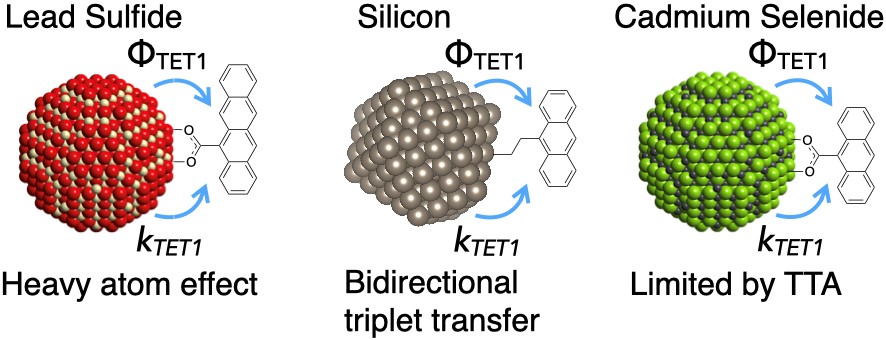B.S., Chemistry; B.A. Economics: Brandeis University, 2004
Ph.D., Chemistry: Stanford University, 2009
Postdoctoral Fellow: University of California, Berkeley, 2009-2012
Ming Lee Tang
4272 HEB
Awards
- 2020 ACS Energy Letters Women Scientists at the Forefront of Energy Research
- 2018 Department of Energy (DoE) Early Career Research Program participant
- 2017 Sloan Research Fellow
- 2014 National Science Foundation CAREER award
Research Interests
Designer Ligands for Functional Nanocrystals
The Tang’s group mission is to find synergistic combinations of conjugated molecules and nanoparticles where the sum is more that its parts. The goal is to enhance electronic communication between quantum confined inorganic nanomaterials and organic compounds. This group employs an interdisciplinary approach to facilitate the rational design of hybrid platforms that can harness multiexcitonic processes like singlet fission or upconversion, in order to improve the performance of photovoltaics, photocatalysts, bioimaging probes and optoelectronic devices.
Synthetic efforts are buttressed by electronic absorption and photoluminescence spectroscopy spanning twelve decades in time from the visible to the near-infrared, as well as state of the art characterization. We have great interest and expertise in thin film transistors, light-emitting diodes and photovoltaics.
In 2015, this group was the first to show that photoexcited semiconductor nanocrystals can transfer energy to molecular triplet states. At that time, this was a new paradigm in the field. This observation has been the basis for the rational design of hybrid platforms that can harness multiexcitonic processes like singlet fission or upconversion, for photovoltaics, photocatalytic and biomedical applications.

